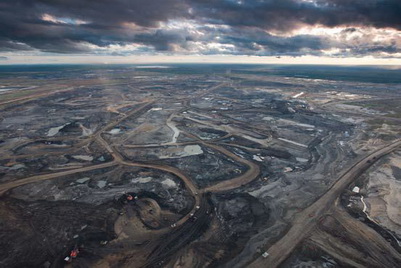- Extracting at least four tons of earth, half of which is tar sands.
- Contaminating two to four barrels of freshwater to separate the oil from the sand.
- Releasing at least three times more global warming pollution than conventional oil.

ธันวาคม 17, 2014
A proposed 2,000 mile pipeline through America’s heartland would inject America with 900,000 barrels per day of one of the dirtiest fuels on the planet, threatening our communities, our landscape, and our climate. CONFRONTING GLOBAL WARMING Peter Essick/National Geographic
Tar Sands Oil
Big Oil has some big plans to put America’s clean energy future in jeopardy by expanding the production of tar sands oil – one of the most destructive, dirty, and costly fossil fuels. The largest tar sands reserves in the world are located beneath the boreal forest in Alberta, Canada. This forest provides critical habitat for about 50 percent of North America’s migratory birds and some of the largest populations of wolves, grizzly bears, lynx and moose in the world.
Oil companies are digging up this pristine forest to extract the tar sands, leaving behind huge toxic wastelands. To remove the thick black oil from the sand, they heat it using natural gas and wash it using enormous volumes of freshwater. In the process, they create toxic lakes that are so large they are visible from space. Just in 2008, 1,600 migrating ducks drowned after landing in the toxic sludge.
Producing one barrel of tar sands oil requires:

